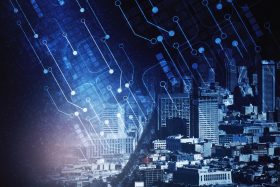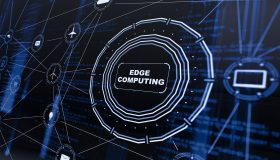Edge Case Study: Inside the Las Vegas Smart City

Recently Futuriom was involved in a research project to define the landscape of the network edge and the emergence of the Integrated Automation Platform (IAP). The project included an interview with the masterminds behind the Las Vegas Smart City project, which is one of the lead cases of smart edge communications in the world.
(Note: Our recent IAP Smart World research was sponsored by UBiqube. Las Vegas interviews were used as part of Futuriom's eBook IAP and Smart World eBook with UBIqube, which is published here.)
Las Vegas is wired with smart sensors, smart cameras, programmable traffic lights, and even mobile data centers that can be rolled around the city in a moment’s notice. The goal is to increase safety, visibility, traffic flow, and response times by collecting and analyzing data in real time. When you hear all the hype about the intelligent edge and smart cities – it’s actually already happening in Vegas.
I spoke with the team from NTT Data, which is doing the integration work, as well as Michael Sherwood, Director of Information Technology for the City of Las Vegas. I also worked with the UBiqube team, which is supplying integration technology – the IAP.
The City of Las Vegas selected NTT Data to act as the systems integrator for the suite of technologies involved. Network and edge compute gear came from Cisco and Dell, virtualization software from VMware, and the IAP was supplied by UBiqube and NTT.
The biggest challenge for NTT Data and Las Vegas was integrating all the technology, according to Sherwood. The communications technology, edge compute infrastructure, virtualization technologies, and sensors all speak their own languages and need orchestration and automation technologies to respond to demands in real time.
Case in point is the traffic system -- which uses sensors and cameras to adjust traffic lights in real time.
“When you start talking about autonomous vehicles, you can’t have a 10-millisecond delay with signalized intersections," says Sherwood. "From our city's perspective, we're going to grow and expand.”
Sherwood says that technology will be a differentiator for cities and municipalities by bringing better safety and order to the world. “If we’re going to increase our [population] base, we need smooth flowing traffic that's [efficient, which will lead to] jobs. [These are not in] just one industry. If you have bad traffic, a lot of companies leave those cities. Sherwood points to the variety of infrastructure and technology as one of the challenges in building a Smart City.
Integrating and Automating the Edge
So how did Las Vegas get here? The answer lies in how it connected, automated, and integrated multiple technology platforms.
Every day we are bombarded with the hype about the edge. We are told that a cocktail of high-speed wireless connectivity (5G), autonomous vehicles, artificial intelligence (AI), edge computing, IoT sensors, and augmented reality is going to the deliver us to the world of the Jetsons. And while it’s true that this is all possible and it’s starting to happen – as witnessed by what's going on in Las Vegas – when you drill down into the technological details the complexity is mind-boggling and it requires coordination of a lot of different pieces – communications tech, edge compute tech, IoT sensors, and IAP – the orchestration integration technology that can connect all these different technology domains.
As a city becomes "smarter," that means it is building a living and breathing IT fabric.
Sherwood says the project required bringing together many stakeholders, including a large variety of technology vendors, to work together. "Case in point, there is a variety of networking gear in the market and we may consider other vendors in the future.”
The IAP Bridges the Gap
Crossing the lines between cloud, communications networks, and edge compute is not easy because each technology domain has its own sets of standards, technologies, and skills.
Bill Baver, VP Smart Platform, NTT Data, said that using the IAP platform that NTT built with UBiqube's product MSActivator helped bridge the gap among the technology domains. “It’s really the glue that can navigate the systems as they go forward," said Bayer. "We use it in a product we create, [which manages] ICT resources."
Sherwood believes that without the management and integration capabilities delivered by the IAP, the project would not exist. He points out that "sensors have no standards" and that the IAP can act as the translator between communications infrastructure and industrial sensing technology.
Edge Will be Driven by Integration
So, it’s clear that value is being created through digital transformation of cities and industries right now. Municipalities are using sensors and cameras to monitor people, the environment, and infrastructure to provide safer spaces. Smart cities can be used to manage crowds, increasing the safety of large gatherings, or to minimize pollution and traffic jams by redirecting vehicles using data analytics and AI. All of this will be enabled by pushing out AI and edge-compute technologies.
This means the need for a secure, integrated IT framework will become even more compelling with the arrival of technologies such as 5G, compute edge, and smart sensors, which will vastly increase the amount and diversity of data and devices that can be used in any smart initiative.
The Smart City of Las Vegas looks like a potential model for Smart Worlds of the future. The Smart Edge is complicated – but it’s starting to happen.



